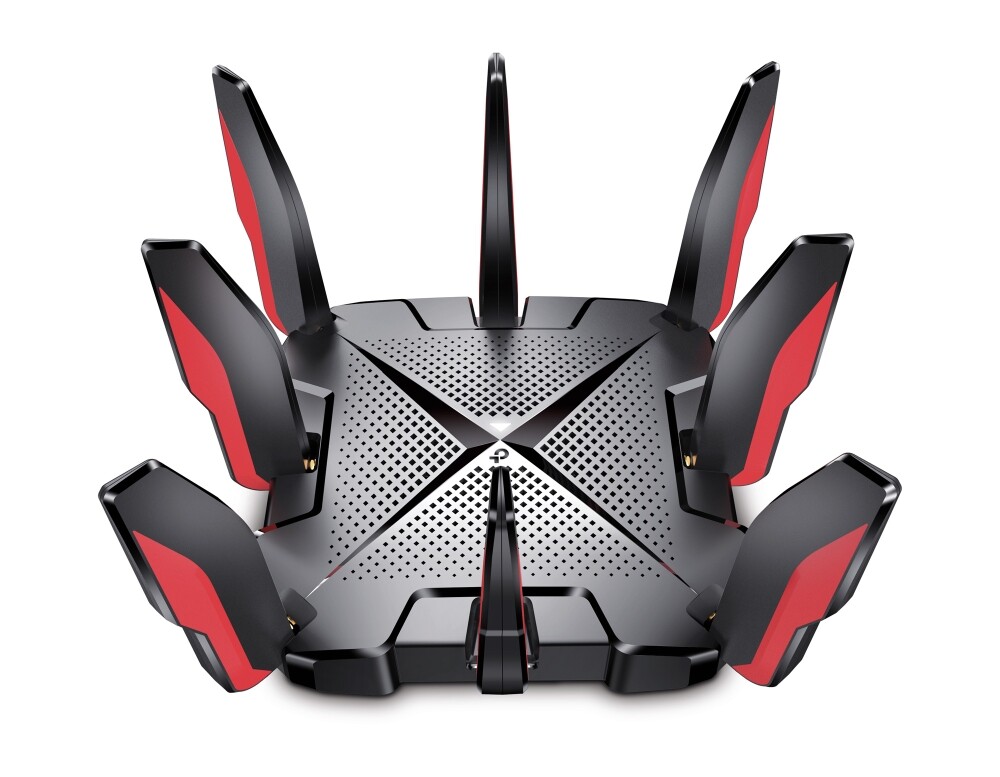TP-Link Launches Archer GX90 With Dedicated Wi-Fi Band For Gaming | TechPowerUp If you're a fan of the spider/octopus router design that we've seen from several companies since 802.11ax/Wi-Fi 6 was introduced, then the new TP-Link Archer GX90 might be for you. Jokes aside, this router takes a different approach to the usual tri-band routers, by dedicating the 4x4 5 GHz radio for gaming, while leaving the other 5 GHz radio for your family to share.
The Archer GX90 is sold as an AX6600 router and it appears to be based on the same hardware as TP-Link's Archer AX90, just in a more gamer focused package. TP-Link has incorporated what they call a Game Accelerator, Game Statistics and Game Protector, with the Game Accelerator being limited to less than 50 games at the moment, of which some appear to be specific to the Chinese market. The Game Statistics feature is actually a real time latency monitor, that also shows how long you've been playing a specific game for and the router load, whereas Game Protector appears to simply be some router based antivirus and parental control software.
The dedicated gaming Wi-Fi radio is relying on the DFS (Dynamic Frequency Selection) bands, which may or may not be allowed where you live. The short explanation here is that the DFS bands are usually shared with things like weather radar and thus must switch to a different frequency band if weather radar signals are detected. This can be done in either an active or a passive way, with the latter simply meaning the router will switch off that radio, whereas active mode switches to a frequency which is not being shared with the weather radar. Judging by the FCC certification pictures, the Archer GX90 uses active DFS band switching, which is a good thing. What DFS did for Wi-Fi, was to open up a wide range of additional frequencies, which means you're less likely to have interference with neighbours in high-density areas and enabled more 160 MHz wide channels.
TP-Link is making the most out of this by offering, as mentioned, a 4x4 configuration for the higher band 5 GHz radio with a theoretical throughput of 4804 Mbps, using a combination of a 160 MHz wide channel and 1024-QAM. This jargon most likely doesn't make sense to most people, but the simple explanation is that it's ways to increase the bandwidth of a Wi-Fi signal without adding more channels and antennas. Keep in mind that your devices aren't likely to use more than a 2x2 radio and many devices still don't support more than 80 MHz Wi-Fi channels and 256-QAM, which means you're not likely to see the kind of speed this router can deliver, unless you're connecting two of them and use the other one as a Wi-Fi bridge for your wired devices.
Hardware wise, we're looking at a quad core ARM Cortex-A7 SoC from Broadcom, which isn't exactly cutting edge, with an integrated 2x2 Wi-Fi radio for the second 5 GHz band and the 2.4 GHz. You also get a single 2.5 Gbps LAN/WAN port, one Gigabit LAN/WAN port and three Gigabit LAN ports, one USB 3.0 port and one USB 2.0 port. The Archer GX90 is also compatible with TP-Link's OneMesh, for those of you that wants to use this as part of a Wi-Fi mesh setup. Price wise, you're looking at an MSRP of $249.99, which is quite reasonable for what's on offer.
This is an interesting idea if allowed in your country.
